

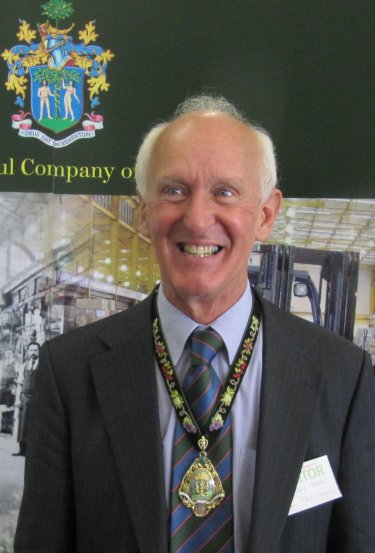
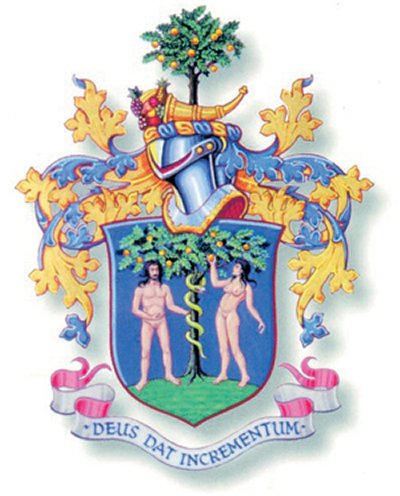
Edwyn, Sandys, Dawes, or as he is known to all in the world of fruit; SANDYS DAWES is the current Master of The Worshipful Company of Fruiterers, an organisation with a history going back hundreds of years.
My first meeting with Sandys was more than 15 years ago when I gave up my life as an apple grower and joined Home Grown Fruit a Top Fruit Cooperative based in Canterbury in East Kent.
Although an experienced apple grower, the world I joined as a 52 year old in 1994 was intimidating.
This 'corporate' world; HGF marketed circa 60% of all English Apples and Pears was a far cry from the 'homely' world I had inhabited as an apple grower in West Kent for more than 30 years.
Soon after joining HGF, the company amalgamated with East Kent Packers (EKP) and we became a new entity; ENFRU (The English Fruit Company) and Sandys as a member of EKP became a director of the new company.
In 1996 my life changed again with promotion to head of the technical team at ENFRU. This was a daunting challenge, while my practical experience was as good as any, leading an experienced team with the corporate expectations of the board members and some 150 growers, amongst them some of the most influential in the country, was to say the least 'scary'
While I had met Sandys and other grower board members in the daily operation of visiting growers, my experience of attending my first board meeting was quite intimidating. I may have been 54 years of age at the time, but when asked by the CEO to present a package of ideas for improving the quality of our product to the board, a collection of the most powerful apple and pear growers in the country, I was to say the least 'nervous'
I remember thinking, do I 'stand' or 'sit' when addressing them? Scary!
While I had the comfort of knowing a few quite well, others were formidable. My presentation of 'mildly' radical ideas did not please the more influential members, who had no inclination to change direction. Oh well, I did my best!
As 'my moment' came to an end and I prepared to leave the 'high altar' of the board room, I was reassured by this most charming smile and a quiet comment, 'well done, that was a very good presentation' that is a moment I will always remember; the friendly face was of course SANDYS DAWES, as true a specimen of a gentleman as you will ever meet!
Sitting with Sandys recently, recounting his family history in the warm homely atmosphere of his kitchen over a welcoming coffee, I learnt so much more about the man, his family history and the future plans for the Dawes 'dynasty'.
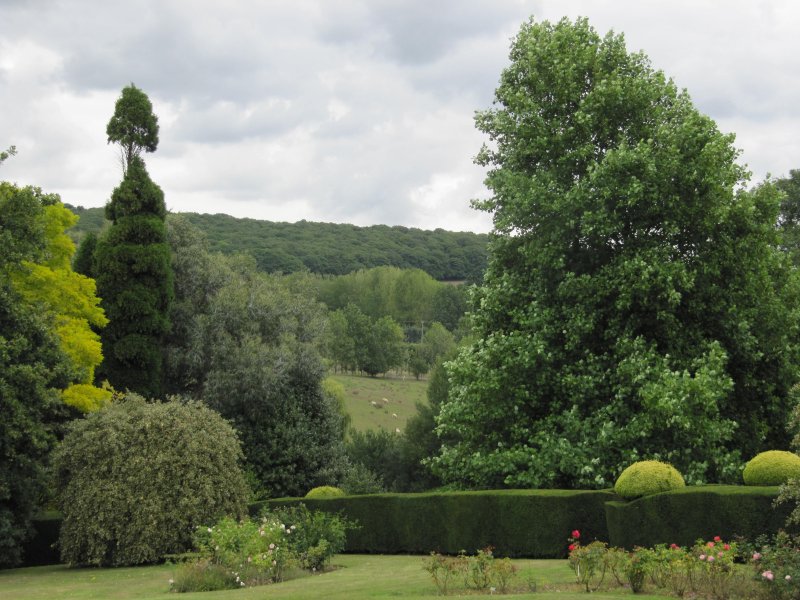
Sandys family have been at Mount Ephraim in the village of Herne Hill in East Kent for more than 300 years. Sandys, or to be more specific, Edwyn Sandys Dawes is the great, great grandson of Sir Edwyn Sandys Dawes, the man responsible for creating this East Kent dynasty. Born on 27 Jan 1838 at Dilhorne, Staffordshire, Edwyn shaped the Dawes family future more than any of the current Sandys forebears, before he died on 21 December 1903 at Orotava in Tenerife.
Before our meeting I had believed the background to Mount Ephraim was Peninsular & Oriental Steam Navigation Company (P&O) shipping line. I knew Mrs Mary Dawes, Sandys mother had maintained a passionate interest in keeping the 12 acres of formal gardens in good order by opening the gardens to the general public. I also remember a comment by Sandys one day when we were entertaining a 'Supermarket buyer' that wealth from shipping created the gardens and that now only by opening to the public could the historic family link to the beauty of Mount Ephraim be preserved.
The Dawes family originated from Westmorland, before settling at Mount Ephraim between 1690 -1700. The house and estate back then was a much more modest affair. Apparently the family spawned a number of Vicars, before one Dawes son from Staffordshire, a young Edwyn Sandys Dawes 'went to sea' and found his way into the offices of The British India Steam Navigation Company, a merchant navy business established in 1856 under the control of the founding father Sir William MacKinnon in Glasgow.
The company expanded rapidly and was re-formed as British India which became part of The P&O group of companies, finally ceasing as British India when absorbed into P&O in 1972.
During his early years at British India, Edwyn's talent was recognised by Sir William and under his patronage Edwyn rose to become an integral part of the British India shipping business. In the 1860's Sir William, recognising the need for an office in London, sent Edwyn to work with Sir William's nephew Archibald Gray in the London office. Together they formed Gray Dawes & Company.
Under Edwyn's influence the business progressed to the point, where in the 1890's he was knighted for his services to merchant shipping.
With his new found stature, in around 1876 Edwyn felt the need for a more suitable home. His solution, buy out the remaining Dawes family ownership of Mount Ephraim. Mount Ephraim was at the time rented out by the Dawes family. The old house was demolished and a new more imposing residence built; the same house that stands to this very day looking out impressively above the Hernhill skyline. More land was acquired and at its peak Mount Ephraim extended to 2,000 acres. As a man of considerable stature Sir Edwyn created a shooting estate in keeping with his position as a country gentleman.
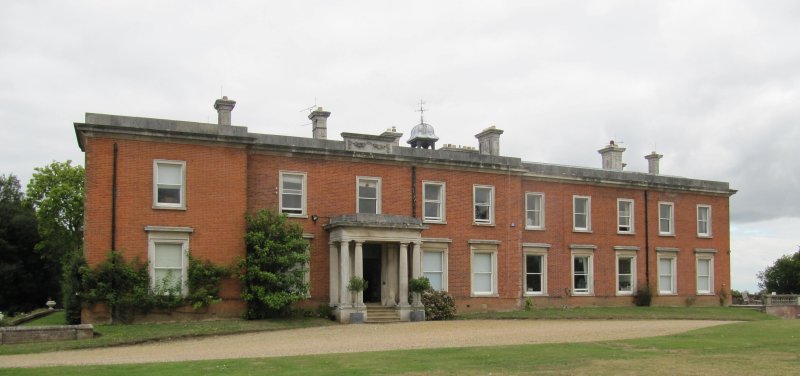
The Edwyn Sandys Dawes name has a poignant place in the family history, as each alternate generation uses the name for the first born son and heir. Hence Sandys father was William (Bill) and Sandys son William (Will) has now taken his place as the principal head of the business, while Sandys and his wife Lesley, take on a more relaxed 'semi retired' lifestyle.
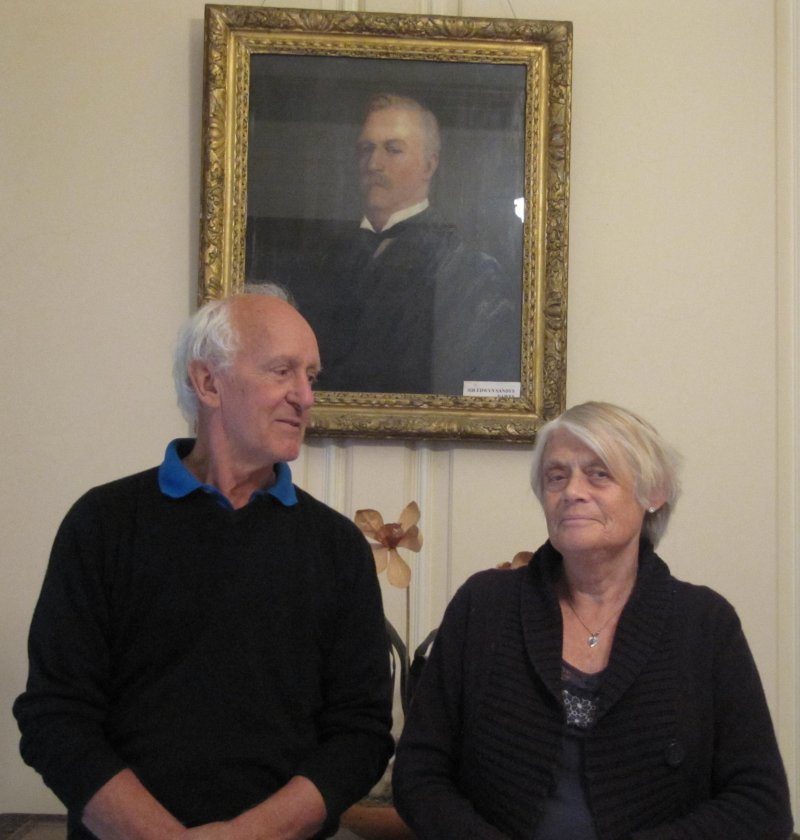
My recollection of P&O came from a 'snippet' I had picked up in the past. Sandys told me that Sir Edwyn went to New Zealand in the 1880's to invest in The New Zealand Shipping Co. This was in turn taken over by P&O in the 1920's hence my recollection had more than a grain of truth.
The company was reorganised in 1880 and financial control of New Zealand Shipping Co was transferred to London. In 1889 Edwyn acquired controlling interest in the company. It was the start of a connection between the company and the Dawes family which was to last right up until 1970.
A rather interesting story; Sandys tells me "it may only be a story" relating to Sir Edwyn's death in 1903, involved a trip he made to the Canary Isles. The story is; he set off with his Butler, a Goat and a coffin. He suffered from Diabetes, hence the goat; goat's milk was considered good for that condition. But on arrival he was in poor health and died almost immediately. Sir Edwyn in his coffin returned to Mount Ephraim, but there is no knowledge of the outcome of the Goat or for that matter, the Butler!
"On his death his son Willie inherited the estate and it was Willie Dawes who developed the garden, which was to become an absorbing and lifelong interest.
When Willie died in 1920, his son Sandys was left with inadequate means to maintain the property. By the time 'that' Sandys Dawes died in 1949 the garden was virtually derelict, the outer reaches so overgrown with weeds as to be impenetrable.
In 1950 his son Bill moved into Mount Ephraim with his wife Mary and their four young children. They gradually restored the garden and after Bill retired in 1972 from the shipping company, of which he had also been chairman, he was able to devote more time to the garden. After his death in 1982, the garden was opened to the public"
An extract from The Mount Ephraim website:
"The nine acres of gardens are remarkable for their variety, and against a backdrop of trees of outstanding shapes and contrasts, they include an unusual topiary, water garden and arboretum, all set in the heart of a progressive fruit farm.
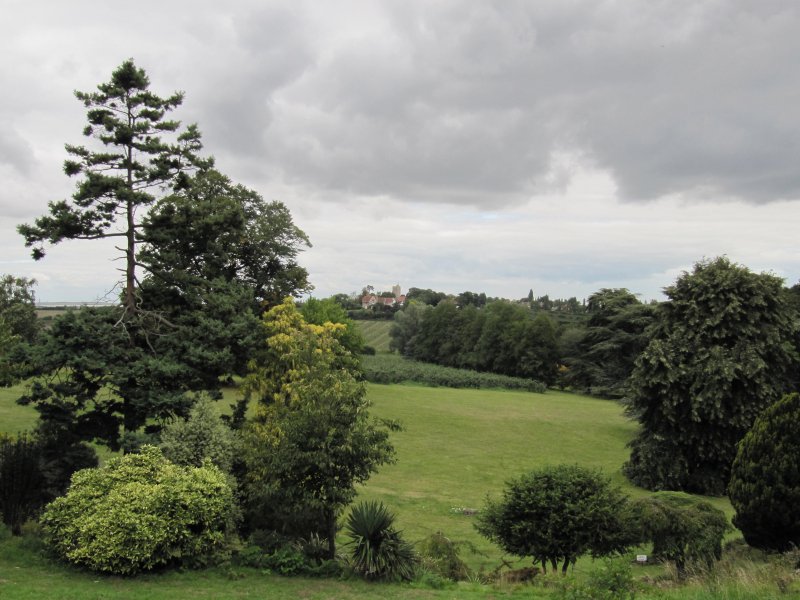
Magnificent views extend over the Swale and Thames estuary, and the gardens are surrounded by woodland parks and orchards. Rose terraces enclosed by yew hedges slope down to a lake with a woodland area as a backdrop. Planting throughout is intensive giving colour and interest throughout the year. The Japanese rock garden, ornamented with stone huterns and based on a series of pools, follows an alternative gently winding route".
Having explored his influential forebears, the current Sandys Dawes life is no less colourful. Born 65 years ago, Sandys grew up with no particular ambition to be a farmer. The land at Mount Ephraim had reduced from the 2,000 acres held by Sir Edwyn and until 1960 was largely rented out. Under Bill Dawes tenure it became a fruit farm, with Apples and Pears the main crops, although Cherries were planted in 1979 under the advice of Phil Clarke the renowned East Kent fruit advisor.
Sandys life changed when he was at University in Melbourne and met his future wife Lesley. On returning to England he took up teaching as a profession and taught in Bexhill in East Sussex, before venturing back 'down under' to teach in Melbourne. The inspiration for his desire to teach in the antipodes was of course, 'Lesley'
Fast forward to 1977 and a career change beckoned, Sandys got involved in the farm. In 1982 with the passing of his father, Sandys took over the Mount Ephraim estate.
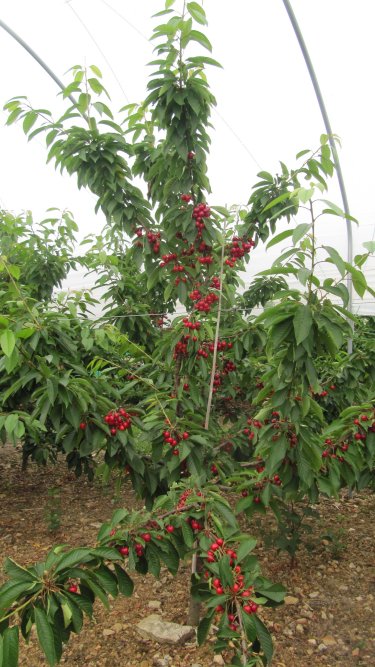
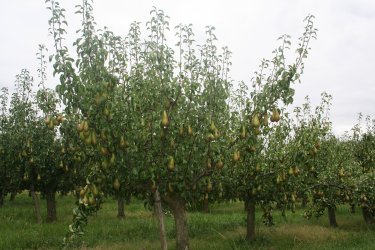
The farm was predominately apples & pears, but the cherries planted on colt rootstock were a problem. The perception that colt could be pruned in the same way as an apple tree proved a disaster. Cultar (a growth regulator) saved the day, but 15 years had been wasted 'barking up the wrong tree' .
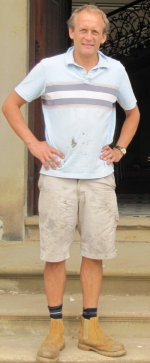 Back in 1979 strawberries had been planted between the rows of cherries, a not uncommon practice in days gone by.
Back in 1979 strawberries had been planted between the rows of cherries, a not uncommon practice in days gone by.
In 1996 Sandys adopted the new trend for strawberry production, 'table tops' and quickly established 4.5 acres of table tops under plastic tunnels. Disappointingly the table tops did not yield as much as anticipated and Sandys did not have enough confidence in the system to expand, and when William arrived to assume a role within the family business in 2006 the decision was made; either expand or grub up!
The decision to withdraw from strawberry production coincided with the expansion of the cherry acreage at Mount Ephraim. The new more productive rootstock Gisella completely changed the probability for consistent yields. Now Merchant, Summersun, Regina, Karina, Sweetheart and Penny, are the popular varieties grown at Mount Ephraim. Penny was bred at EMR and is considered one of the best of the new varieties.
Today, Mount Ephraim estate grows around one hundred acres of fruit, with 45 acres of Cherry the predominant fruit. 9 acres of Plums, mainly Victoria, with recent plantings of Early Rivers and Opal, complete the stone fruit acreage.
Braeburn, Gala and Early Windsor are the mainstay of the apples and 25 acres of Conference pears with an age range of 10 - 40 years completing the top fruit acreage.
Historically Sandys has been a 'devotee' of cooperative marketing with membership of EKP integral to the business, however in recent times, with his son William taking on the management mantle, a more independent marketing strategy has been taken.
Will & Sandys feel this gives them a greater flexibility and the opportunity to maintain more control and keep marketing costs down.
The cherries have now become the key to the future and the current 50 tonnes grown per annum, should reach 150 - 200 tonnes as the trees come into full crop.
Cherries - The future for Mount Ephraim?
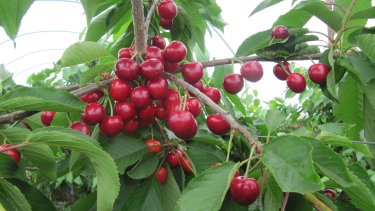
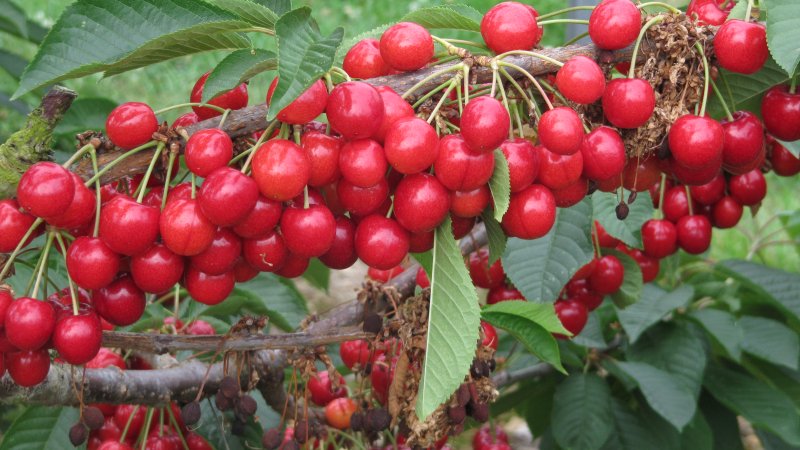
Conference Pears - still an important crop at Mount Ephraim!
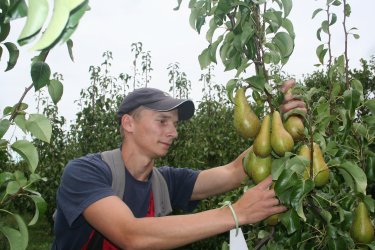
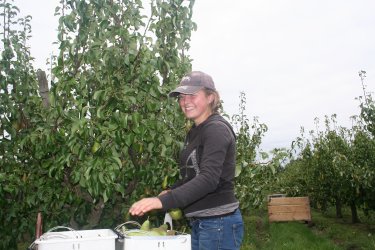
Marketing is now firmly under the control of the 'Mount Ephraim Brand'
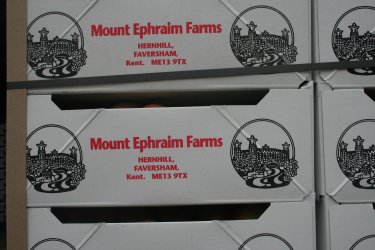
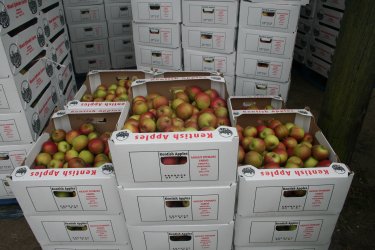
A very important part of activities at Mount Ephraim is the use of house and garden for wedding events, corporate activities, and many other opportunities to enjoy a happy occasion in the Edwardian Mansion and surrounding gardens and estate.
The driving force behind the provision of weddings events was Lesley Dawes, and much credit must be given to her for the quality of Mount Ephraim's entertainment portfolio.
Please visit the Mount Ephraim website for a full appreciation of the many opportunities available.
THE MASTER!
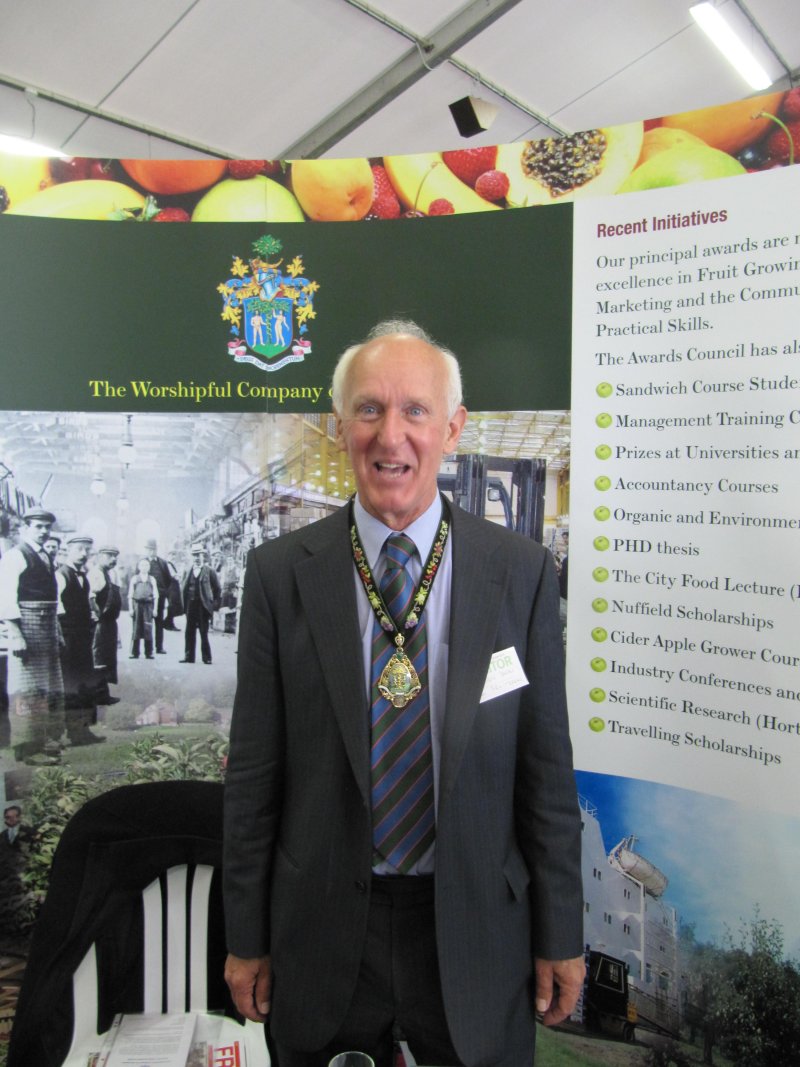
Sandys has been a member of the Worshipful Company of Fruiterers since 1997 and since January 25th 2011 The Master of the Worshipful Company a position he will hold until 25th January 2012.
An extract from WCF website makes for informed reading;
"We are a progressive City Livery Company that has been actively supporting the City of London and the fruit industry since the thirteenth century. Today over half of the family of our membership is actively engaged in the fruit industry, while the other half is drawn from a wide range of professions and occupations operating in the City and wider community. Our aim is to continue to be an influential fellowship, promoting the interests of the fruit industry, the Lord Mayor and the City of London Corporation building upon its ancient heritage and traditions.
In medieval times craftsmen and traders in the City of London formed themselves into guilds, societies and brotherhoods in order to govern their trade, maintain the quality of their products and services, train apprentices and care for their members.
In due course the Crown, recognising the increasing power and importance of these Companies, granted charters of incorporation. The Companies adopted a common hierarchy headed by a Master or Warden (for a one year term only) and a Court of Assistants. The hierarchy also took to wearing distinctive dress known as the Livery.
As the influence of the London Companies grew, they demanded a louder voice in the government of the City, and were successful in obtaining electoral rights for Mayoralty and the Sheriffs.
For more than 500 years, the Livery Companies were at the heart of the commercial, social and religious life of the merchants and manufacturers of London. Largely through these bodies, the City achieved its eminence as the greatest trading metropolis in the world.
By late Victorian times, the connection most Companies had with their craft had atrophied; nevertheless they continued to flourish as City institutions. There are now more than 100 such Companies in the City of London.
The Worshipful Company of Fruiterers, which has been in existence since before 1300 AD, is among the oldest Companies, and stands 45th in order of precedence of the Livery Companies.
Our key objectives are;
To promote excellence across all sectors of the fruit industry
To support education and research within the fruit industry
To support the Lord Mayor and the City of London Corporation
To be active in raising funds for charity
To foster, within the Livery, a spirit of good fellowship
Sandys told me he has thoroughly enjoyed his time as Master; the opportunity to meet many interesting people and visit so many different places while performing his duty has enriched his understanding of 'all things apples' and not just apples!
As Master, Sandys has been invited into areas of science and technology not accessible to the average man. Here are a just a few areas of funding and research involving The Worshipful Company of Fruiterers, recounted to me by The Master!
On a visit to a "View Day" at St. Bartholomew Hospital, instituted as far back as 1551, Sandys saw the very latest in cancer treatment. The CyberKnife - which will provide revolutionary radiotherapy for conditions which would previously have been inoperable; just one of many good causes The Fruiterers have contributed funds to.
The Fruiterers are also part funding a valuable research project at East Malling Research. Varroa is a real threat to our bee population and this research is attempting to identify what exactly is happening in our orchards; orchards which deliver £100 million in annual apple crops, which are a valuable health and financial resource for our country.
Sandys is very proud of the funds donated to individuals and organisations by the Fruiterers.
The Awards Council provides funding for horticultural research, travel bursaries, prizes for students at horticultural colleges, the cider marquee at the Bath & West Show, international speakers for Fruit Focus conference and many more.
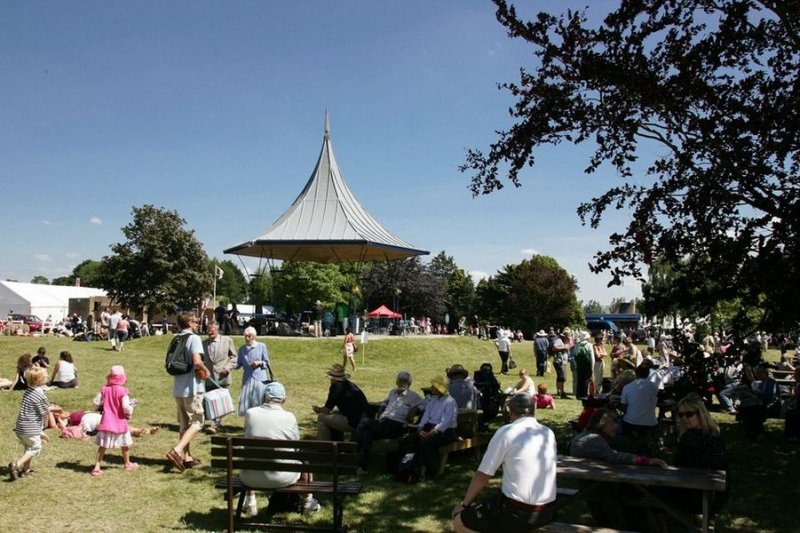
Particularly important is the funding for a Fruiterers Nuffield scholar working in the fruit sector. Many scholars have enjoyed the opportunity to travel and enhance their knowledge of modern 'global' fruit production bringing valuable information back to the benefit of our fruit industry.
On a more frivolous nature, Sandys was informed by past Masters that he should attend every invitation possible and 'above all' enjoy his year. The annual Shrove Tuesday pancake race held in Guildhall Yard was one such event. Masters must wear their gowns and a chef's hat and apron, a real challenge on a windy day. The Gunmakers start each race with a BANG; the Clockmakers taking responsibility for accurate timing, The Fruiterers provide the lemons, The Cutlers the 'plastic forks, The Glovers the white gloves and The Poulters, the eggs!
Cider is one of the oldest applications for apple use and Sandys enjoyed an opportunity to gain a valuable understanding at The Royal Bath & West show in Shepton Mallet in June this year.
With The Fruiterers sponsoring the Orchards & Cider pavilion and presenting a Best in Show Cup, gracefully presented this year by The Countess of Wessex to Julian Temperley a doyen among Somerset cider makers, Sandys enjoyed an integral role as a judge, tasting the wide range of ciders, some dry, and some sweet.
Another highlight Sandys particularly enjoyed was the City Food lecture held in the Guidhall and attended by 600 guests. Initiated in 2001 the lecture brings all the key players in the food industry together, with farm leaders, supermarket representatives, politicians, journalists and members of interest groups. The event is organised by the seven food related liveries; the Bakers, Butchers, Cooks, Farmers, Fishmongers, Fruiterers and Poulters.
Talking to a young horticulture student, one of the 20 sponsored to attend the lecture, enabled Sandys an opportunity to encourage young people into the 'food world' and hopefully into a possible future in fruit as well.
The Guildhall is highly relevant as the scene of this lecture as it was here within the City of London where the histories of the London Liveries started. Fruit used to be landed at Fruiterers Passage just east of Southwark Bridge and barely a mile from the Guildhall.
There are now 108 liveries, and that number is still rising.
An interesting 'snippet' relayed by Sandys is the reference to the 'Ordinance of the Fruiterers' dated 1463 which laid down the rules detailing the way that fruit should be sold and measured so a levy could be imposed on all sales; poignant now that we are governed by European Union weights & measures standards.
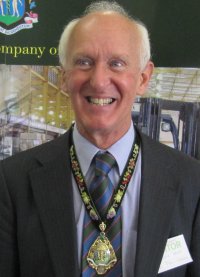 The long list of 'past' Masters is truly impressive with literally hundreds of Masters since the WCF came into being before 1300 AD and while there are, and always have been very many liverymen working hard behind the scenes to ensure the Company delivers its objectives, I am sure from my personal knowledge of the man, that there is no one more sincere, or popular as Master than the current incumbent, Edwyn Sandys Dawes.
The long list of 'past' Masters is truly impressive with literally hundreds of Masters since the WCF came into being before 1300 AD and while there are, and always have been very many liverymen working hard behind the scenes to ensure the Company delivers its objectives, I am sure from my personal knowledge of the man, that there is no one more sincere, or popular as Master than the current incumbent, Edwyn Sandys Dawes.